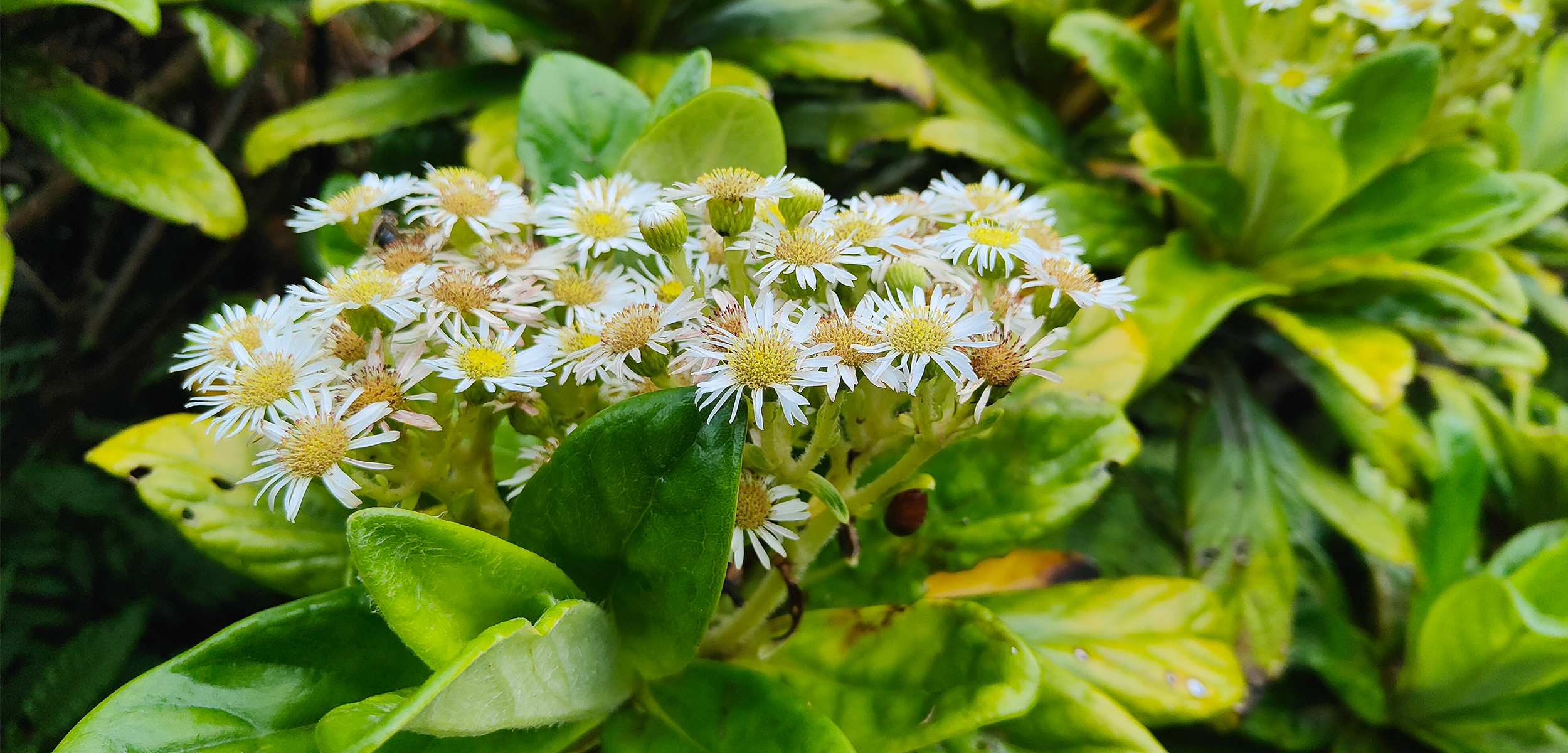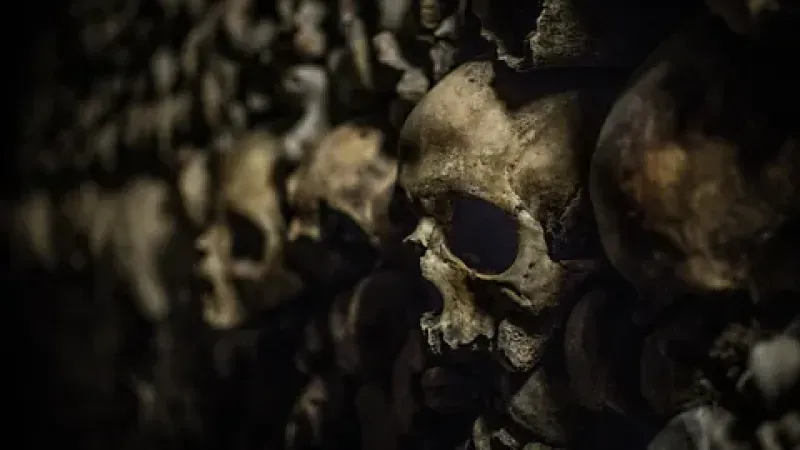He found a human jawbone in his parents' tile floor

From John Hawks: "The poster is a dentist and visited his parents house to see the new travertine they installed. It's no surprise that he recognized something right away: A section cut at a slight angle through a very humanlike jaw. The Reddit user who posted the story has followed up with some updates over the course of the day. The travertine was sourced in Turkey, and a close search of some of the other installed panels revealed some other interesting possible fossils, although none are as strikingly identifiable as the mandible. This naturally raises a broader question: How many other people have installed travertine with human fossils inside? Travertine is known to commonly include fossils, of algae, plants, and small animals—and humans as well, it seems."
A Danish museum returned hundreds of gems that were stolen over decades

From The Art Newspaper: "A Danish museum has assisted the British Museum in securing the return of 290 Greek and Roman gems which had been stolen over a 25-year period. The theft was revealed by the London museum a few weeks after a senior curator was quietly suspended. Last October, 290 stolen items were handed over to the Thorvaldsens Museum in Copenhagen for safekeeping and these were returned to the BM in January. The 290 items had been deposited at the Copenhagen museum by Ittai Gradel, the Danish antique gem collector and dealer who had acquired them from a single source between 2010 and 2013. At that time, Gradel had no idea that they might have been stolen."
Something is killing off the trees in Saint Helena’s famous cloud forest

From Hakai magazine: "Rebecca Cairns-Wicks looks up at the branches of a black cabbage tree. It’s growing at the edge of a grassy road along a sinuous ridge leading up the misty slopes of the cloud forest on Saint Helena Island. Umbels of small flowers, like bunched-up daisies, drape over the tree’s flat, leathery leaves, and a mat of ferns, lichens, mosses, and other organisms coat its trunk, giving it a strikingly black appearance.Saint Helena—part of the British overseas territory Saint Helena, Ascension, and Tristan da Cunha, which lies more than 1,800 kilometers off the coast of West Africa, between Angola and Brazil—is known for its rare and beautiful cloud forest ecosystem."
Editor's note: If you like this newsletter, please share it with someone else. And if you really like it, perhaps you could subscribe, or contribute something via my Patreon. Thanks for being a reader!
A device that tickles the tongue seems to help those with tinnitis

From NPR: "More than 25 million adults in the U.S., have a condition called tinnitus, according to the American Tinnitus Association. It can be stressful, even panic-inducing and difficult to manage. Dozens of factors can contribute to the onset of tinnitus, including hearing loss, exposure to loud noise or a viral illness. There's no cure, but there are a range of strategies to reduce the symptoms and make it less bothersome, including hearing aids, mindfulness therapy, and one newer option – a device approved by the FDA to treat tinnitus using electrical stimulation of the tongue. The device has helped Victoria Banks, a singer and songwriter in Nashville, Tenn., who developed tinnitus about three years ago."
How ancient Prague became synonymous with the defenestration of rivals

From Public Domain Review: "Thes word "defenestration" is a compound nominalization. “Fenestrate”, the verb at its root, only appears a couple centuries later, carrying two unrelated technical usages in the fields of surgery and botany. From this we can surmise that “defenestration” was a linguistic artifact constructed intentionally. Perhaps it meant to lampoon the Latin of Bohemia’s Catholic rulers: in Czech it is “defenestrace”, a rare Latinate word in that language. The humor here derives from the fact that a form of free fall carries a name as clunky as the doctrines and mores of the Catholic rule it sought to swiftly overturn. Centuries later, the act of defenestration would serve as a touchstone of the Czech national identity and also of Prague’s municipal history."
The sinister history behind some of the world's first tourist sites

From the BBC: "A recent TikTok sensation in Paris had a decidedly ghoulish air: a string of viral videos showed adventurers sneaking into the medieval catacombs underneath the city, where the pitch-dark tunnels are packed floor-to-roof with the bones of some six million dead people. In this morbid craze, people break in through illegal entrances, walk across floors carpeted with human bones, crawl through crevices packed with femurs and explore the city's roughly 300km of off-limits routes with headlamps – occasionally getting lost. While some TikTok commentators in Paris have warned of the risks and potential dangers, the trend taps into a much deeper appetite that travellers have long had to rub shoulders with the dead."
The lost art of creating art on the edge of a book's pages
Fore-edge painting is a technique popularized in the 18th century by John Brindley and is deemed critically endangered in the contemporary era
— Massimo (@Rainmaker1973) April 29, 2024
[📹 brimariepaints]pic.twitter.com/wRLFO2ivpY
Acknowledgements: I find a lot of these links myself, but I also get some from other newsletters that I rely on as "serendipity engines," such as The Morning News from Rosecrans Baldwin and Andrew Womack, Jodi Ettenberg's Curious About Everything, Dan Lewis's Now I Know, Robert Cottrell and Caroline Crampton's The Browser, Clive Thompson's Linkfest, Noah Brier and Colin Nagy's Why Is This Interesting, Maria Popova's The Marginalian, Sheehan Quirke AKA The Cultural Tutor, the Smithsonian magazine, and JSTOR Daily. If you come across something interesting that you think should be included here, please feel free to email me at mathew @ mathewingram dot com



